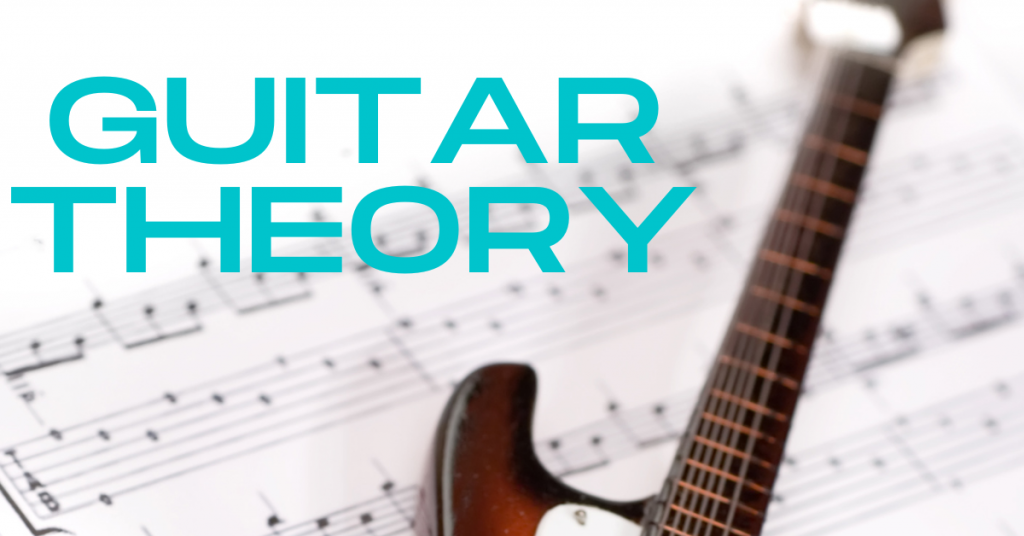Introduction to the Mixolydian Mode
Learn what the Mixolydian Mode is and how to play Mixolydian scale guitar shapes in this step-by-step, easy lesson.
Table of Contents
What is the Mixolydian Mode?
The Mixolydian mode is built from the 5th degree of the major scale (Ionian), which makes it the 5th mode of the major scale.
Due to its intervallic structure, Mixolydian is considered a major mode. Major modes always have a major triad/ arpeggio stemming from the root note.
Mixolydian scale formula
Scales are built from formulas, which are sequences of intervals used to determine the notes relative to the root.
The Mixolydian scale formula is: 1-2-3-4-5-6-b7
The Mixolydian scale has just 1 different interval than the major scale, the b7.
For comparison, here the major scale (Ionian) formula: 1-2-3-4-5-6-7
Key Takeaways
- The Mixolydian mode is built from the 5th degree of the major scale
- The Mixolydian scale formula is 1-2-3-4-5-6-b7
- Mixolydian is a major mode, and its unique “dominant” sound comes from its flattened 7th interval played over a major triad with the same root note.
Understanding the Mixolydian Mode
To understand the Mixolydian mode, you’ll first look at how it compares to the Ionian mode, which is the major scale. The examples will use the same root note.
Read this post to learn the major scale formula.
Mixolydian parallel to the major scale
Notes in C Ionian
| 1 | 2 | 3 | 4 | 5 | 6 | 7 |
| C | D | E | F | G | A | B |
Notes in C Mixolydian
| 1 | 2 | 3 | 4 | 5 | 6 | b7 |
| C | D | E | F | G | A | Bb |
As a whole, the interval that makes the C Mixolydian mode different than the C Ionian mode is the b7, which results in a Bb note.
This means lowering/flattening the 7th degree of the Ionian mode is the only step you need to take in order to get the Mixolydian mode.
Mixolydian relative to Ionian
You can find the notes of a Mixolydian mode/ scale by deriving it from the parent major scale. This is done by taking a major scale and building it from the 5th degree.
This gives you the relative Mixolydian scale for that major scale.
For example, building the C major scale from the 5th degree gives you the notes:
G-A-B-C-D-E-F
This results in the G Mixolydian mode.
So G Mixolydian is the same as C Major?
The G Mixolydian mode has the same notes as the C Ionian Mode (C major), but they do not have the same function.
This principle applies to every Mixolydian mode. It possesses the same notes as it’s parent major scale, being built from the 5th note/degree of that scale, but functions differently due to the implied intervals relative to the root note.
What does the Mixolydian mode sound like?
The Mixolydian Modes’ unique and distinct sound makes it a very popular mode in contemporary music. This distinct sound comes from it’s flattened 7th interval, making it a popular alternative to the typical Ionian mode (major scale).
For guitar in particular, the mode is known for its bluesy sound, which sounds great in blues, rock, country, and jazz.
When should I play the Mixolydian mode?
As a general rule you can play the Mixolydian scale over any major chord or dominant chord with the same root note.
Due to it starting from the 5th interval, which is the dominant interval, Mixolydian is sometimes called the dominant scale.
The difference between the Mixolydian scale and Mixolydian mode
The Mixolydian scale and mode refer to two distinct musical concepts that are often confused with each other.
The Mixolydian scale is a sequence of seven notes containing a beginning and end point. The scale follows the pattern of tones:
Whole-Whole-Half-Whole-Whole-Half-Whole
This tonal structure results in a “dominant” sound.
In contrast, the Mixolydian mode is one of the modes derived from the major scale, its root note stemming from the fifth degree.
Therefore, while both concepts share similarities such as their underlying tonality, their structure and origin differ significantly in their application within music theory and practice.
Rick Beato explains this extremely well.
Despite all this, they are usually treated the same way. This gives you this modal principle:
As a general rule, when asked to play a Mixolydian scale or Mixolydian mode, it means the same thing.
For example, the G Mixolydian mode is essentially the same as the G Mixolydian scale.
Hopefully you got it! Now let’s move on to actually playing Mixolydian guitar shapes.
Mixolydian Scale Guitar Shapes
You’ll use the G Mixolydian Mode for these shapes, because all of its notes are natural. Plus, these shapes will feel familiar to you if you know the C major scale.
Mixolydian Scale 3 Notes Per String Shapes
3 NPS = 3 Notes-Per-String
Learn more about 3 notes-per-string-shapes here.
Mixolydian scale shape 1 (3 NPS)

Mixolydian scale shape 2 (3 NPS)

Mixolydian scale shape 3 (3 NPS)

Mixolydian scale shape 4 (3 NPS)

Mixolydian scale shape 5 (3 NPS)

Mixolydian scale shape 6 (3 NPS)

Mixolydian scale shape 7 (3 NPS)

G Mixolydian Scale Tab (One Octave)
You can take this shape and move it to any octave on the fretboard. This means you can play this shape at any root note if you keep and follow the same interval structure!

Listen
Pay attention to how the b7 sounds relative to the root note.
Mixolydian Scale Guitar Fretboard Diagram

Mixolydian Scale Guitar PDF
Harmonizing the Mixolydian mode
When you harmonize the Mixolydian scale diatonically you get these chords:
| Degree | I | ii | iii | IV | v | vi | VII |
| Triads | Maj | Min | Dim | Maj | Min | Min | Maj |
| Seventh Chords | Dom7 | Min7 | Min7b5 | Maj7 | Min7 | Min7 | Maj7 |
This legend shows the full names of the shortened chord names.
| Min = | Minor |
| Maj = | Major |
| Dom = | Dominant |
| Dim = | Diminished |
Mixolydian chord progression
Knowing the chords in the key of C major is a good first step in learning to create progressions in Mixolydian, because is has the same chords as the G Mixolydian Mode.
From there you can use standard progressions, but use G as the root note to imply Mixolydian.
Here’s a progression coming from the key of C major, but using G Mixolydian as the root mode.
I-IV-I-V using Mixolydian
The I-IV-I-V and the I-IV-V are arguably the most common use cases for Mixolydian chord progressions.
Here’s a I-IV-I-V using G Mixolydian.
G7 – C – G7 – Dmin
You can turn the IV and V chords into their diatonic 7th forms as well, resulting in:
G7 – CMaj7 – G7 – Dmin7
Lastly, you could use create a typical, tension-building blues progression by playing the I-IV-V with dominant 7th chords exclusively. This results in the Mixolydian chord progression:
G7 – C7 – G7 – D7
Conclusion and final thoughts on using the Mixolydian mode in guitar playing
Now that you understand the Mixolydian mode and Mixolydian scale guitar shapes, it’s time to apply everything you’ve learned.
Practice your Mixolydian scale shapes over a backing track using the same root note. This will give you an idea of how it sounds over a typical major or dominant chord progression.
Remember to emphasize the b7 interval at all times!
You can also train your ear by shifting between Ionian and Mixolydian over a drone backing track with a single root note, such as C or G.
Overall, practice over these backing tracks will help you understand the distinct, bluesy tone that sets the Mixolydian mode apart from its major scale brother.


